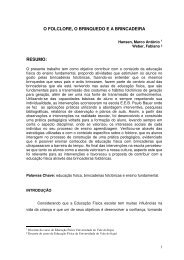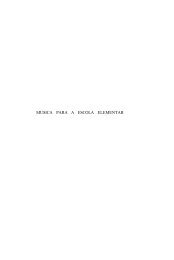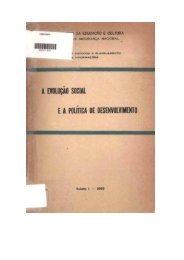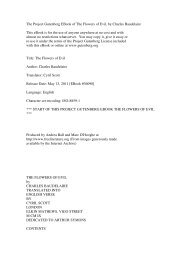A History of English Literature
A History of English Literature
A History of English Literature
You also want an ePaper? Increase the reach of your titles
YUMPU automatically turns print PDFs into web optimized ePapers that Google loves.
The few remaining years <strong>of</strong> Addison's life were rather unhappy. He married<br />
the widowed Countess <strong>of</strong> Warwick and attained a place in the Ministry as one<br />
<strong>of</strong> the Secretaries <strong>of</strong> State; but his marriage was perhaps incompatible and<br />
his quarrel with Steele was regrettable. He died in 1719 at the age <strong>of</strong> only<br />
forty-seven, perhaps the most generally respected and beloved man <strong>of</strong> his<br />
time. On his deathbed, with a somewhat self-conscious virtue characteristic<br />
both <strong>of</strong> himself and <strong>of</strong> the period, he called his stepson to come and 'see<br />
in what peace a Christian could die.'<br />
'The Tatler' and the more important 'Spectator' accomplished two results <strong>of</strong><br />
main importance: they developed the modern essay as a comprehensive and<br />
fluent discussion <strong>of</strong> topics <strong>of</strong> current interest; and they performed a very<br />
great service in elevating the tone <strong>of</strong> <strong>English</strong> thought and life. The later<br />
'Tatlers' and all the 'Spectators' dealt, by diverse methods, with a great<br />
range <strong>of</strong> themes--amusements, religion, literature, art, dress, clubs,<br />
superstitions, and in general all the fashions and follies <strong>of</strong> the time. The<br />
writers, especially Addison, with his wide and mature scholarship, aimed to<br />
form public taste. But the chief purpose <strong>of</strong> the papers, pr<strong>of</strong>essedly, was<br />
'to banish Vice and Ignorance' (though here also, especially in Steele's<br />
papers, the tone sometimes seems to twentieth-century readers far from<br />
unexceptionable). When the papers began to appear, in spite <strong>of</strong> some<br />
weakening <strong>of</strong> the Restoration spirit, the idea still dominated, or was<br />
allowed to appear dominant, that immorality and lawlessness were the proper<br />
marks <strong>of</strong> a gentleman. The influence <strong>of</strong> the papers is thus summarized by the<br />
poet Gray: 'It would have been a jest, some time since, for a man to have<br />
asserted that anything witty could be said in praise <strong>of</strong> a married state or<br />
that Devotion and Virtue were in any way necessary to the character <strong>of</strong> a<br />
fine gentleman.... Instead <strong>of</strong> complying with the false sentiments or<br />
vicious tastes <strong>of</strong> the age he [Steele] has boldly assured them that they<br />
were altogether in the wrong.... It is incredible to conceive the effect<br />
his writings have had upon the Town; how many thousand follies they have<br />
either quite banished or given a very great check to! how much countenance<br />
they have added to Virtue and Religion! how many people they have rendered<br />
happy by showing them it was their own faults if they were not so.'<br />
An appeal was made, also, to women no less than to men. During the previous<br />
period woman, in fashionable circles, had been treated as an elegant toy,<br />
<strong>of</strong> whom nothing was expected but to be frivolously attractive. Addison and<br />
Steele held up to her the ideal <strong>of</strong> self-respecting intellectual development<br />
and <strong>of</strong> reasonable preparation for her own particular sphere.<br />
The great effectiveness <strong>of</strong> 'The Spectator's' preaching was due largely to<br />
its tactfulness. The method was never violent denunciation, rather gentle<br />
admonition, suggestion by example or otherwise, and light or humorous<br />
raillery. Indeed, this almost uniform urbanity and good-nature makes the<br />
chief charm <strong>of</strong> the papers. Their success was largely furthered, also, by<br />
the audience provided in the c<strong>of</strong>fee-houses, virtually eighteenth century<br />
middle-class clubs whose members and points <strong>of</strong> view they primarily<br />
addressed.<br />
The external style has been from the first an object <strong>of</strong> unqualified and<br />
well-merited praise. Both the chief authors are direct, sincere, and<br />
lifelike, and the many short sentences which they mingle with the longer,<br />
balanced, ones give point and force. Steele is on the whole somewhat more<br />
colloquial and less finished, Addison more balanced and polished, though<br />
without artificial formality. Dr. Johnson's repeatedly quoted description<br />
<strong>of</strong> the style can scarcely be improved on--'familiar but not coarse, and<br />
elegant but not ostentatious.'















